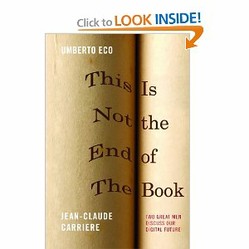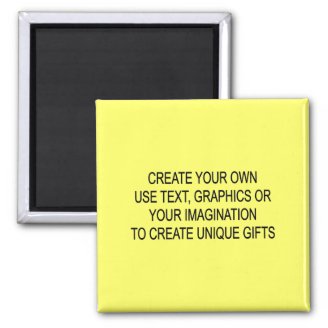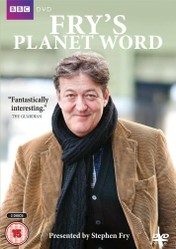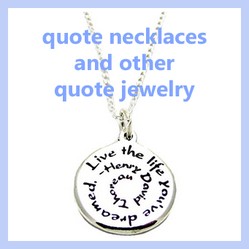This Is Not the End of the Book is one of my favorite books of 2012. It’s not only a window into the state of the book but also into the state of the world. Umberto Eco and Jean-Claude Carrière, two giants in the world of books and literature, bandy about memories, some about their life experience, and others about their lifelong research. Umberto Eco is the famous semiotician, author of The Name of the Rose and other novels, as well as of countless essays and studies. Jean-Claude Carrière is a novelist and screenwriter, collaborator of Luis Buñuel, with whom he co-authored the scripts of many films, including Belle de Jour (1967), The Discreet Charm of the Bourgeoisie (1972), That Obscure Object of Desire (1977), and the writer behind tens of other films, such as The Unbearable Lightness of Being (1988) and Cyrano de Bergerac (1990). Among his books, I read Le cercle des menteurs: Contes philosophique du monde entire (The Circle of Liars: Philosophical Stories of the Entire World), installment 1 and 2, in the Romanian translation. He has many more, and they all look equally interesting. And so is he in conversation with Umberto Eco in This Is Not the End of the Book; The two writers have collaborated on another project in the past, the book Conversations About the End of Time (2011), together with Stephen Jay Gould and Jean Delumeau.

This Is Not the End of the Book; What the Book is About
by Mira
This book-length conversation between Umberto Eco and Jean-Claude Carrière is one every book lover and passionate reader and film aficionado will cherish.
Now to the conversation in This Is Not the End of the Book; between Umberto Eco and Jean-Claude Carrière, steered now and then by Jean-Philippe de Tonnac.
This article is not a proper review of the This Is Not the End of the Book; -- more like an overview of some of the things I found particularly interesting.
“What really strikes me is the total disappearance of the present.”
Says Jean-Claude Carrière about our involvement of making products for the future, as well as about our interest in retro fashion trends. I loved his commentary. We rarely live in the present, and much less often in the moment. Also, their whole discussion about collecting rare books, some of them incunabula (printed before 1501), is testimony to their love of the past. But, as we see in this book and in Eco’s essays, they’re involved with the present as well. Eco now stores his writing on a hard drive, after using paper, floppy disks, mini disks, CD-ROMs, and memory sticks.
The question then arises: How is a library to archive films? The storage formats change so fast. The question then becomes what gets obsolete first, because no matter what format a library chooses, in time they will have to transfer the information. And that’s where the physical presence of a book is so reassuring. Because even if there were to be no electricity, you would still be able to read an old-fashioned book. (Although with the advent of electric clothing, all that might change: we might be able to power devices like Kindle.)
“If we no longer need to remember, then intelligence is all we have left.”
Says philosopher Michel Serres, quoted by Jean-Claude Carrière. And yet, says Umberto Eco, we may need to continue to exercise our memory for the sake of our mental health. Also for our “intellectual freedom,” adds Eco.
Intellectual stimulation protects, to some extent, against degenerative brain diseases such as Alzheimer’s, which, according to a study Jean-Claude Carrière brings to the table, now people develop at younger ages than in the past, as early as 45. Eco believes that for this reason and others, rote-learning still has its merits. As with all the topics, Jean-Claude Carrière has a rejoinder for this idea as well, saying that few people memorize as much as theatre actors, and yet many develop Alzheimer’s.
“What I miss most since computers is the existence of rough drafts.”
Says Jean-Claude Carrière, who tells us he liked all the “signs of movement, of life, of unresolved searching” that he used to make on a rough draft. He also says that when working on a film scene he needs to see it all at a glance, so he has to print it during his writing process in order to assess it.
“We use computers, but we print like madmen.”
Umberto Eco echoes Jean-Claude Carrière’s thoughts, saying that he uses up more paper now that he works on a computer, because it’s so easy to make corrections, print a draft, make more corrections, and print again.
How many books do they have in their libraries and have they read them all?
The answer to the second part of the question is no, they haven’t. Eco confesses to not having read the Bible from beginning to end. He does know what he missed though. He also says he never read the Mahabharata – incidentally, this is a book Jean-Claude Carrière adapted for theatre, and also as a pocket-book edition. Jean-Claude Carrière, who is incredibly well-read and also a film buff, tells a really funny story about him discussing Visconti’s film The Leopard with Louis Malle. After a fierce debate, they ask each other if they’ve actually seen the film and it turns out neither of them had.
But don’t be fooled, these people have read far, far more than the average passionate reader. Of course Eco hasn’t read all of his 60,000+ books in his library. Many of them are books he received from other people “as tributes;" he gives them to his students. How many rare books does he have? 1,200, he says. He has some nice stories about collecting some of them.
Then he has “a whole cellar full of translations” of his books. Being stuck with a few copies every time a book was translated (and his Name of the Rose was translated in 45 languages), he decided to send some of them away. He's also had his share of jury duty, and accumulated books from there as well. He says “the poets are by far the most dangerous.”
All this information might seem boring, but I find it’s rather funny that even in the age of so much electronic reading, we’re still inundated with books. Well, not we, but some people. Jean-Claude Carrière calculated, for fun, at some point in his life that, given a price of 6,000 euros per square meter, 12,000 euros per vertical meter, and the cost of making a bookcase, shelving each book cost him 42 euros.
Jean-Claude Carrière has 30,000 or 40,000 books, 2,000 of which are rare books.
When time stood still and the imagination still had pride of place
Some things you discover collecting old, rare books
Jean-Claude Carrière and his wife have an interest in Persian books. One such book, about Persia, written by Jean Chardin in the 17th century, and illustrated with engraved plates, was published again in the 18th century and then in the 19th century, with the same text and plates. As if nothing had changed in Persia.
One plate may be used to represent different cities, as in the incunabulum Nuremberg Chronicle.
Scrap dealers
Some booksellers are scrap dealers, destroying books to sell the plates individually at much cheaper prices. Collectors have an unwritten rule about avoiding such booksellers.
The two most prized rare books
The most prized rare books are the 1623 Shakespeare Folio and the Gutenberg Bible. The last Gutenberg Bible sold for 3 or 4 million dollars, about 20 years ago. Copies of the Folio are also off the market nowadays.
The Florentine Codex Historia general de las cosas de nueva España
The Conquistadors and missionaries to the New World destroyed all codices about Mayan and Aztec life except a few. There now remain 3 Mayan codices. Aztec manuscripts were also destroyed; we’d do well to learn more about Bernardino de Sahagún, a Franciscan friar, who saved Aztec manuscripts and had them copied, in a set of 12 books known as the Florentine Codex (first published in its entirety in 1979). This codex is the most important document about pre-Colonial Aztec culture.
The Florentine Codex, Historia general de las cosas de nueva España (General history of the things of New Spain), is available as of November 2012 at the World Digital Library. NB: I tried accessing the images, and while I did get a list of them, I could see only the first image.
Erotic literature in Spain
You can look at the whole spectrum of Spanish literature today, and won’t find “a single erotic text published before the second half of the twentieth century.” Could that be? Jean-Claude Carrière argues that the Spanish Inquisition wiped out the propensities.
Possibly “the greatest archaeological find of the twentieth century”
In 1911, French linguist and archaeologist Paul Pelliot and a German team discovered 70,000 manuscripts in a cave in China, created before the tenth century. About twenty thousand of these manuscripts are now at the Bibliothèque Nationale in the Pelliot collection.
This great discovery included 2 formerly lost languages and “the only Manichaean text we know of that was written (in Chinese) by the Manichaeans themselves rather than by their enemies.”
There’s much more in the book
Read about burning books, hiding books, developing a passion for books, trading books, French baroque poets of the 17th century, the birth of the “novel of manners” in England, the folly of editors who fail to recognize greatness (“It’s no good trying to sell the Americans a novel about animals.” – About George Orwell’s Animal Farm; there are more great examples in the book, including some from the world of film), and much more to delight and educate! Enjoy!
You might also like
Fry’s Planet Word, Another Nice Stephen Fry ProjectFry’s Planet Word is a five-part series on language and storytelling written ...
Give the Gift of Quote Necklaces and Other Quote JewelryMake a statement with inspirational jewelry with quotes, or gift it to someon...







 Funny T-Shirts and Mugs for the First Year of the Covid Eraon 10/15/2020
Funny T-Shirts and Mugs for the First Year of the Covid Eraon 10/15/2020
 Cool Gadgets for Geeks and Travelers Part 3, Great Gifts This Christmason 05/06/2019
Cool Gadgets for Geeks and Travelers Part 3, Great Gifts This Christmason 05/06/2019
 25 Creative Get Well Gift Ideas for Coworkerson 03/08/2019
25 Creative Get Well Gift Ideas for Coworkerson 03/08/2019
 Perfect the Moment. Seize the Day and Perfect Iton 12/12/2018
Perfect the Moment. Seize the Day and Perfect Iton 12/12/2018



Comments
You're right. And then there's the question of spelling and punctuation and capitalization, italics, etc. in older texts. Editors take such liberties!
Mira, My, my! Such a wonder for these two deep thinkers -- gifted at expanding esoteric boundaries -- to have this book-length dialogue. I appreciate the insights which emerged, especially about the joy of many handwritten drafts but the madness of over-printing.
I appreciate digitization for easy availability in time and space: access any time, any place. Nevertheless, the concern which I've experienced in regard to electronic versions is that the standards of digitization are variable: missing pages and blurred images vs. clarity and completeness. It's quite disappointing to be confronted with messy versions of botanical and zoological images which were so beautifully drawn by their illustrators and were carefully printed into books in centuries past. When digitized with care, these illustrations can be quite stunning -- perhaps not quite as remarkable as the immediacy of paper, but nevertheless quite impressive.
Well, saving books is in a way living in the past. But the past has lots of things to be treasured. And even though I'm looking at getting a Kindle Paperwhite (finally), holding a book is still the best way to read a book for me -- by far!! But, with interactive books, things may become more and more interesting in the electronic versions.
I love the books needs more books mug, so true and with the electornic world of reading we def need to be saving books... Thanks for the review of the end of the book... :)K